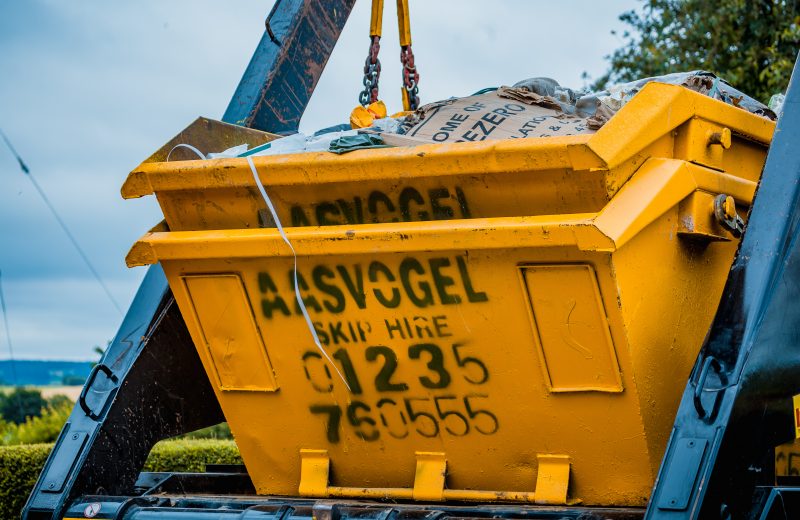Get the most out of your skip hire by using every square inch of space inside. But don’t forget how important loading up your skip safely is! Follow our advice for the best way to fill a skip.
Before you hire a skip with Aasvogel, we can help you choose the right skip for your project, discussing it with you and giving you our advice based on our decades of experience in skip hire. Whatever size of skip you hire, You’ll want to avoid overloading the skip while getting the most out of its capacity – and to do that, you’ll need to get organised!
Sort and Organise Your Waste
Barring hazardous waste (which generally can’t go in a skip anyway), you should aim to have four main groups of waste when sorting: flat objects, uniform shapes, bulky waste and loose debris. You should plan to fill your skip in that order, so make sure you have these groups defined in some way before you start filling. Layering your skip in this way will make sure the waste is safe and stable, and let you use the space more efficiently.
You might want to source a good wheelbarrow to make hauling waste to your skip easier, too.
1. Flat Objects
All your flat waste should go down first: cardboard, carpet and flooring, chipboard, doors and old timber included. If it’s flat, it’s part of your first layer! Cardboard and softer items will be squashed flat as heavier waste is added on, helping to fill in the gaps and make more of the space.
2. Uniform Shapes
After flat items have lined the base of the skip, it’s time to add uniform shapes – any objects that will slot or fit together. Bricks, concrete blocks, paving and tiling: if they’re pattern-forming objects, arrange them into a tightly-packed formation, avoiding any air gaps.
3. Large, Bulky Waste
Once you’ve layered flat and uniform objects, it’s time to take care of the big stuff! Large, bulky items like furniture should go in next but if possible, break them down into smaller parts. Try to continue doing this in layers to avoid large gaps.
4. Loose Debris
Rubble, soil, sand and gravel should go in very last. A wheelbarrow can help you to get more waste over in a single trip. These small particles will percolate down through the gaps in the lower layers, filling up any air pockets and further securing the waste in place. If there’s space left over, you can add on any garden waste you might have, too!
Limitations
Besides hazardous waste limitations, the only other thing to remember is overloading: while we can still take an overloaded skip, we will only do so if it is safe – but it will incur an overload charge. We do expect every skip we collect to be level loaded and safe to transport.
Overfilling your skip doesn’t just incur an additional cost: it can be really unsafe, too. Poorly loaded and stacked items could slip or collapse, causing injury to yourself or others.
Skip Safety
Don’t forget to practice good safety when loading your skip. Wear gloves when handling materials to avoid cuts and nasty splinters, and wear proper eye protection when breaking items down. Don’t attempt to lift heavy items on your own – excessively large items should be raised with a hoist or a grab.
Domestic Skip Hire Specialists
For reliable, professional skip hire, contact Aasvogel – call 01235 760555 or order a skip online!



